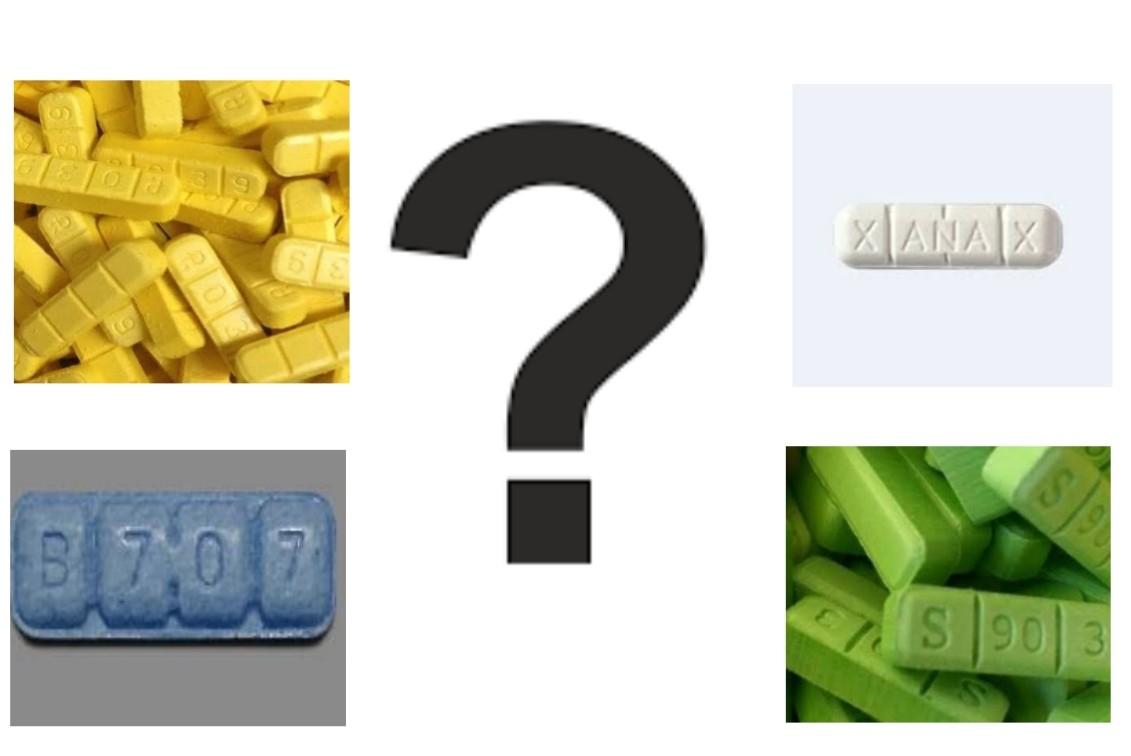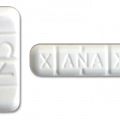Xanax is the commercial or brand name for alprazolam, a benzodiazepine. Xanax is a prescription drug used to treat anxiety and is prescribed by doctors and psychiatrists to help alleviate panic attacks and other types of anxiety disorders as well as sleep disturbances and withdrawal from alcohol. Xanax comes in different shapes, sizes and strengths as we will see in the later part of this article.
Why is Xanax Addictive?
Approved by the Food and Drug Administration (FDA) in 1981 for its ability to slow down the chemicals in the brain that are responsible for excitement, Xanax acts on both the central nervous system and the brain. In short, this chemical reaction is why people may abuse Xanax. Unfortunately, there are risks of taking Xanax. Use of the drug can lead to dependence, abuse, and addiction.
In 2013, more than 48 million people received a prescription for Xanax, making it the most commonly prescribed benzodiazepine and number one psychotropic medication prescribed in the United States. Anyone who takes Xanax for at least 3-4 weeks is at risk of developing a Xanax addiction and experiencing withdrawal symptoms if they stop taking the drug cold turkey.
Short-Term Effects of Xanax Addiction
The immediate effects of Xanax can be intense. They can occur right after ingesting the drug and they usually cease after use is discontinued. Immediate side effects of Xanax can include:
- A calming feeling.
- Difficulty concentrating.
- Memory problems.
- Loss of sex drive.
As you can see, the immediate effects of Xanax can be physical, emotional, and mental. Xanax can impair your ability to do certain things, such as operating a vehicle and completing other complex tasks. It is important to be aware of the immediate effects of Xanax so you don’t make yourself vulnerable to unnecessary risks.
Long-Term Effects of Xanax Addiction
Xanax is not intended to be used over a long time. This is because long-term effects of Xanax can cause significant problems, including depression, the development of severe physical dependence, and dangerous withdrawal symptoms, including the potential for seizures and depression.
How Does Xanax Addiction Start?
Xanax is prescribed to treat certain mental health conditions including generalized anxiety disorder (GAD) and panic disorder. Xanax works on both the central nervous system and the brain, leading to a calming sensation. Xanax usually works quite rapidly once ingested. Because of its calming effects on the brain and body, Xanax is used to treat other issues as well, such as sleep problems and those withdrawing from alcohol.
The sedative effects of Xanax make it highly desirable, as many people find that the tranquil effects of the drug help combat stress. While more research is needed, addiction specialists believe that Xanax has a high probability of misuse or “misuse liability.” Since it is extremely addictive, tolerance and dependence can develop quickly and withdrawal from the drug can be more severe than any other benzodiazepine.
Xanax Addiction Symptoms
Xanax abuse symptoms can be physical, mental, emotional, behavioral, or some combination of the four. Specific Xanax abuse symptoms include:
- Nausea, vomiting, and upset stomach.
- Social withdrawal and isolation from family and friends.
- Poor performance at school/work such as dropping out or loss of employment.
- An increase in aggression and violence.
- Change in sleep habits including sleeping more or less than normal.
- Mood changes such as an increase in irritability, anger, depression, and anxiety.
- Change in appearance including significant weight loss or weight gain.
It is important to be aware of these signs and symptoms in yourself and your loved ones. Xanax abuse in older populations can result in an overdose. It has also been shown to lead to falls, dementia, and cognitive decline.
Physical Symptoms of Xanax Addiction
Of course, the physical symptoms of Xanax addiction can vary. Depending on several factors, physical symptoms of Xanax addiction can also include:
- Shortness of breath.
- Poor coordination.
- Dry mouth.
- Erectile dysfunction.
- Sensitivity to light.
- Muscle pain.
- Weight loss or weight gain.
Behavioral Symptoms of Xanax Addiction
It is important to know that specific behavioral changes occur in addiction. These behaviors can be drastic and difficult to see in loved ones. They can include:
- Use of Xanax in large quantities.
- Use of Xanax without a prescription.
- Lying about Xanax use.
- Forgoing responsibilities.
- New financial troubles.
- Lost interest in previously loved hobbies.
- Strained relationships with friends and family.
The strongest Xanax bar color
There are several types of Xanax, the pill comes in different shapes and sizes containing varying milligrams of Alprazolam. Xanax pills currently on sale worldwide includes:
- 25 mg (white, oval, scored, imprinted “XANAX 0.25”)
- 5 mg (peach, oval, scored, imprinted “XANAX 0.5”)
- 1 mg (blue, oval, scored, imprinted “XANAX 0”)
- 2 mg (white, oblong, multi-scored, imprinted “XANAX” on one side and “2” on the reverse side)
Other Generic versions include :
- 2 mg (blue, rectangle) pill with imprint B 7 0 7
- 2 mg (yellow, rectangle) pill with imprint R 0 3 9
- 2 mg (green, rectangle) pill with imprint S 9 0 3
- 2 mg (white, rectangle) pill with imprint G 3 7 2 2
- 25 mg (white, round) pill with imprint R 0 2 7
The Strongest Xanax (in terms of milligrams) ever produced is a pressed counterfeit Xanax with the imprint 666 and known on the streets as the Red Devil Xanax. This counterfeit Xanax pill is dyed blood red and one single red devil pill contained more than 5mg of alprazolam: the equivalent of two-and-a-half of HBB’s regular white 2mg pills. The Red devil xanax is considered as the most powerful xanax bar ever produced.
The lowest dose of xanax (alprazolam) is 0.25 mg, and it usually comes as an oblong white pill that is scored down the middle. However, there is a legal 3-mg extended-release (XR) pill, one of such Xanax is the green three sided pill with imprint G3 supplied by Greenstone Limited. The R 86 Xanax produced by Actavis also contains Alprazolam Extended-Release 3 mg.
Xanax Withdrawal Symptoms & Detox
Due to the potential severity of Xanax withdrawal symptoms, it is important that you not stop taking Xanax cold turkey. To avoid any unnecessary trips to the emergency room, it is highly recommended that you cease use under the direction of a doctor or addiction specialist. In most cases, they will outline a treatment plan that consists of slowly tapering or reducing your Xanax intake. In other cases, medical detox may be recommended for you.
Xanax withdrawal symptoms can also be an indicator that addiction has developed. Studies have shown that Xanax withdrawal symptoms can include:
- An increase in overall anxiety.
- Heart palpitations.
- Blurred vision.
- Suicidal ideations.
- Nightmares and other sleep disturbances.
Medically supervised detoxification helps manage the safety concerns associated with Xanax withdrawal and also takes into account any pre-existing health conditions. SEE: Difference Between White And Green Xanax





